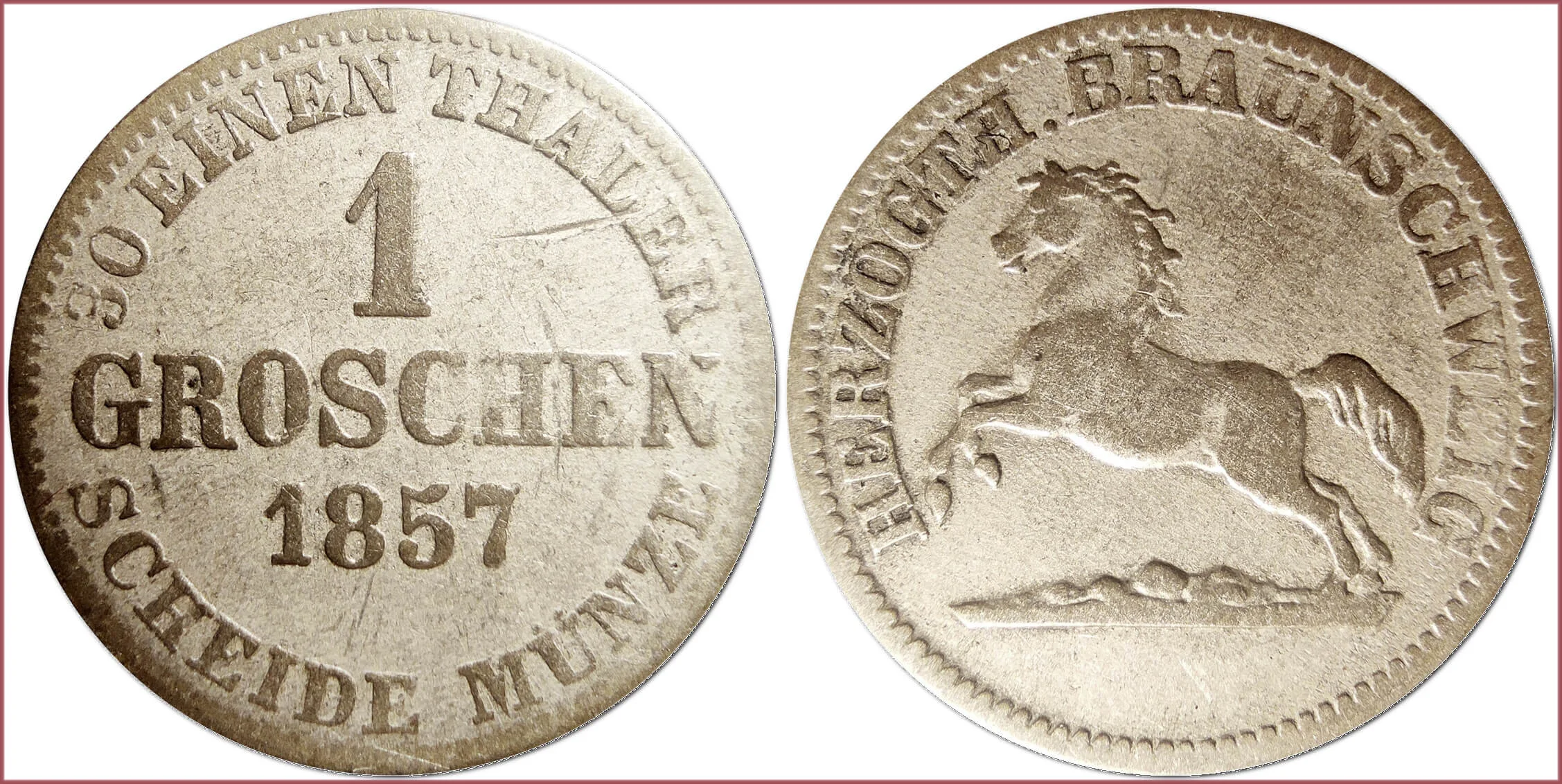GROSCHEN: COIN OF BRUNSWICK (GERMANY)
1 groschen, 1857: Duchy of Brunswick (German states)
Ruler: William VIII — duke of Duchy of Brunswick.
30 EINEN THALER: 1/30 thaler (30 groschen = 1 vereinsthaler).
SCHEIDE MÜNZE: change coin (small change).
Scheidemünze — coins issued in Germany and Austria up to start of the First World War in 1914 whose intrinsic metal value was less than the legal value stamped on them (the intrinsic value of a coin can be thought of as the amount of money the metal inside the coin is worth). A kind of credit money or fiat coin. The term applied to the low- to medium-value coins and is often translated as small change coin, small-coin change or just small coin. Since 1915, all coins minted in Germany (in general, and most other countries of the world in recent centuries), have been Scheidemünzen opposed to currency or commodity money whose nominal value is fully covered by its intrinsic value — the price of metal.
1 GROSCHEN - 1857.
HERZOGTH. BRAUNSCHWEIG: Duchy of Brunswick (German "Herzogtum Braunschweig").
The white horse as a symbol of Lower Saxony (the land in the north of Germany, of which Brunswick was a part).
Mintage: 38.593.
- Silver (0.220): 19 mm - 2.1 g
- Reference price: 10$
COIN GROSCHEN — WHERE & WHEN (coins catalog: by names & emitents)
- DUCHY OF BRUNSWICK (1857-1860): groschen = 10 pfennig = 1/30 vereinsthaler
- Another GERMAN STATES, 15th-19th centuries (probably most of the German states: if we talk about different types of groschen): groschen = 1/24 thaler
- REPUBLIC OF AUSTRIA (1925-2001): groschen = 1/100 schilling
- ... (some old European issuers minted coins of this type, but they had other names — gros, grossus...)
About the name of the coin groschen: for the first time the groschen, or rather its predecessor — the grosso, was mentioned in the 12th century as a silver coin of Genoa (Italy). It was a coin weighing 1.46 grams (a rather heavy silver coin for the High Middle Ages), after which the Latin name was fixed "grossus denarius" ("thick denarius"). After some time, a similar coins appear in Tours, France (gros tournois — so-called tournose), in Germany (Meissen groschen), Bohemia (Prague groschen), England (groat), the Netherlands (groot), Poland (Kraków grosz), Lithuania (grosz of the Grand Duchy of Lithuania), Hungary (garas), Turkey (kuruş), Ethiopia (gersh), Egypt (qirsh)...
In many German lands, groschen issued before the unification of Germany (1871) and the creation of a single monetary system and often contained the mark "24", as it was 1/24 of the local thaler (until 1837; later — 1/30).
The topic of German groschen is quite interesting because of the large number of varieties that can be considered as separate coin names: tournosegroschen, mariengroschen, fürstengroschen, schildgroschen, gutergroschen, silbergroschen, neugroschen...

